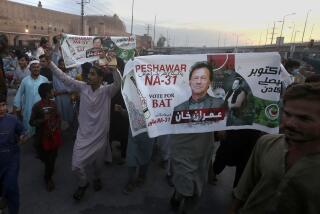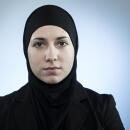Egypt may release Mubarak as he stands trial in 2011 deaths
- Share via
CAIRO — Former Egyptian President Hosni Mubarak, who is on trial on murder-related charges in the deaths of hundreds of protesters in 2011, may be released from prison soon, after a judge set aside a corruption case against him.
Mubarak faces another legal challenge, and there is also the possibility that prosecutors could file new cases against him to continue holding him. Nonetheless, the prospect of his release could incite fresh unrest at a time the military-installed government is cracking down on the Muslim Brotherhood after the coup last month that ousted Islamist President Mohamed Morsi.
“He’ll be out in a couple of days,” Farid Deeb, one of Mubarak’s lawyers, said of his client.
Judiciary officials, who spoke on condition of anonymity because they were not authorized to talk to the media, said the court ordered Mubarak’s release in a corruption case in which he and his two sons were accused of embezzling funds for the maintenance of presidential palaces. His sons will remain in custody, the court said without explanation.
The 85-year-old former leader remains in custody in an additional graft case but is expected to be cleared after his family reportedly paid restitution. State media reported Mubarak would remain in jail for two more weeks on that charge.
If released, Mubarak would in effect be free on bail while he stands trial in the slayings of more than 800 protesters by security forces and paid thugs during the 2011 uprising that ended his 30-year police state.
Since Mubarak’s arrest two years ago, his fate has remained a curiosity as the nation’s political and economic turmoil has deepened. His release from Tora Prison would signal for many that the remnants of the old guard are back in power and the revolution that promised a new democracy has been hijacked by the army and security forces.
The news about Mubarak came as Islamist militants killed at least 25 police officers in an ambush in the Sinai Peninsula. State TV reported that militants had forced the off-duty police officers from buses and shot them execution-style outside Rafah, which borders Israel and the Palestinian-controlled Gaza Strip. The interim government later said the officers were killed when the vehicles were struck by rocket-propelled grenades.
The attack occurred less than a day after Egyptian authorities announced that police had killed 36 members of the Muslim Brotherhood who were purportedly attempting to escape while being taken to prison.
The circumstances of their deaths remained unclear. The Interior Ministry said the prisoners had tried to escape Sunday by taking an officer hostage. The police responded by firing tear gas into the van, suffocating 36 and “foiling the escape plan,” the ministry said, adding that the officer survived.
The Brotherhood, however, alleged that the ministry had changed its account of the incident several times, at one point reporting that the prisoners were killed with live ammunition. The Brotherhood also reported that 37 prisoners had been killed.
On Sunday night, state media gave a different version of events, saying the transport convoy was attacked by armed assailants trying to free the detainees. They were reportedly being taken to Abu Zaabal prison, near Cairo, to serve 15-day sentences on charges related to a bloody weekend standoff between security forces and protesters in the capital’s Ramses Square.
The Brotherhood characterized the deaths as “assassinations” that were part of a “war of extermination” against Egyptians who continue to oppose the July 3 coup. More than 900 people have been killed since Wednesday, most of them Brotherhood supporters and anti-military demonstrators slain by security forces.
“We hold the Interior Ministry and the coup leaders politically and criminally responsible for these horrible crimes that don’t appear will end,” the Brotherhood said in a statement.
Priyanka Motaparthy, a Human Rights Watch researcher, visited the Cairo morgue where the prisoners’ bodies were taken. She was not allowed to see the bodies directly but was permitted to take photographs and video through a small window. She also took photos and video from family members who were allowed to see the bodies. Some of the dead had cuts on their heads and faces and others had dark, almost black, faces.
“They were bodies that were not in good shape,” she said.
Motaparthy said her organization’s investigation would be limited because the group would not be granted access to police or other prisoners who witnessed the killings. “It’s going to be very difficult to understand what happened,” she said.
Special correspondent Ingy Hassieb contributed to this report.
More to Read
Sign up for Essential California
The most important California stories and recommendations in your inbox every morning.
You may occasionally receive promotional content from the Los Angeles Times.












